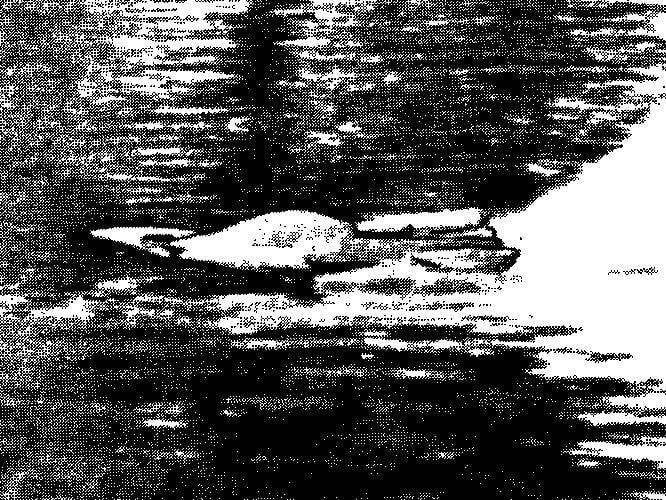This boat is a further development of the model with which we have acquainted the readers-modelers in the “M-K” № 8, 1987. Compared to the boat-“type” has a new improved driving performance. Steering with the rotating shaft of the propeller made the model much more maneuverable. A tunnel scheme gave the hydroplane properties such as increased stability in curves and a higher acceleration.
The model with the engine a working volume of 3.5 cm3 Czech athlete. Below shows the pattern side of the float with superimposed stringers and the pattern side of the Central building. Overall length of about 740 mm. to the Right shows the template frames.
On models equipped with the engine MVVS-3.5 mm with a reducer with gear ratio 1:1.68 m (gear 16 and 28 teeth, module 1). A homemade propeller, three-blade, Ø 45 mm. control Equipment — dual channel.
By construction, planing simple and easy to reproduce without the use of special rigging. All the parts of the sidewalls of the hull and floats are cut out of plywood with a thickness of 1,5 mm. Of the same material and frames made of a set of cross, except for SHP. 6, having a thickness of 3 mm. the housing Assembly consists of gluing to the sides of the stringers cross-section of 3X3 and 4X4 mm (pine; binder for the entire Assembly — epoxy), subsequent installation and control of the relative position of the frames and sidewalls and the final pouring of the joints with resin. After viskazivaniya the received frame, he doosselaere sheets of plywood with a thickness of 1.2 to 1.5 mm. the inside of the hull and floats varnished thinned “epoxy”.
Before the end of the finish of the Cabinet it is mounted the propeller shaft in deadwood and the fuel tank has a volume of about 200 cm3, is adapted to the riding conditions at the oval trajectory in the direction of the clock. You must also mount and beech bars motor. On this model the engine was placed nodes, comprising blocks of silicone rubber. In conclusion, most of the free volume of the casing is filled with self-foaming or regular foam. The entire surface of the boat is glued with fiberglass average thickness, polished and stained by known technologies.
Receiver, power equipment and steering wheel-car control gas engine, is placed in front of the engine compartment between the frames 3 and 4. Cover — Plexiglas 3 mm thick, the connector is sealed with a sheet of spongy rubber. The other actuator of the instrument is placed between the frames 5 and 6 and serves to control the position of the propeller of the propeller shaft.
The second design relates to sports “superskirama” intended for participation in competitions of the highest rank. Its Creator — renowned expert in ship modeling class, “hydro”, the Italian Gino Alongi — elected to build the most popular among athletes today, the diagram with two front spaced floats. In favor of the correctness of the choice says a number of major successes in the Championships of Italy and the world.
The basis of this model belonging to the class FSR-H to 7.5, fiberglass is the Central building. The use of this material is mainly caused a decrease in the mass of the glider to 2.7 kg vs 3.5 kg in the model of the same athlete in 1987. Along with the case is made and the fairing of the plant (the cap is then separated). But one power bulkhead, Vileika mounted yet only a few fungi threaded for the mounting of the motor and feed mechanics.
 Barely born, the new ship class FSR-H (hydro), designed for a group race for the simple distance, immediately attracted the attention of the athletes of all countries. A broad range of search capabilities of the scheme, not trapped in the strict confines of the technical requirements, availability of manufacturing relatively simple models and the relative simplicity of the “pilot” RC airboats — all this was only in favor of the appeal of the new class.
Barely born, the new ship class FSR-H (hydro), designed for a group race for the simple distance, immediately attracted the attention of the athletes of all countries. A broad range of search capabilities of the scheme, not trapped in the strict confines of the technical requirements, availability of manufacturing relatively simple models and the relative simplicity of the “pilot” RC airboats — all this was only in favor of the appeal of the new class.